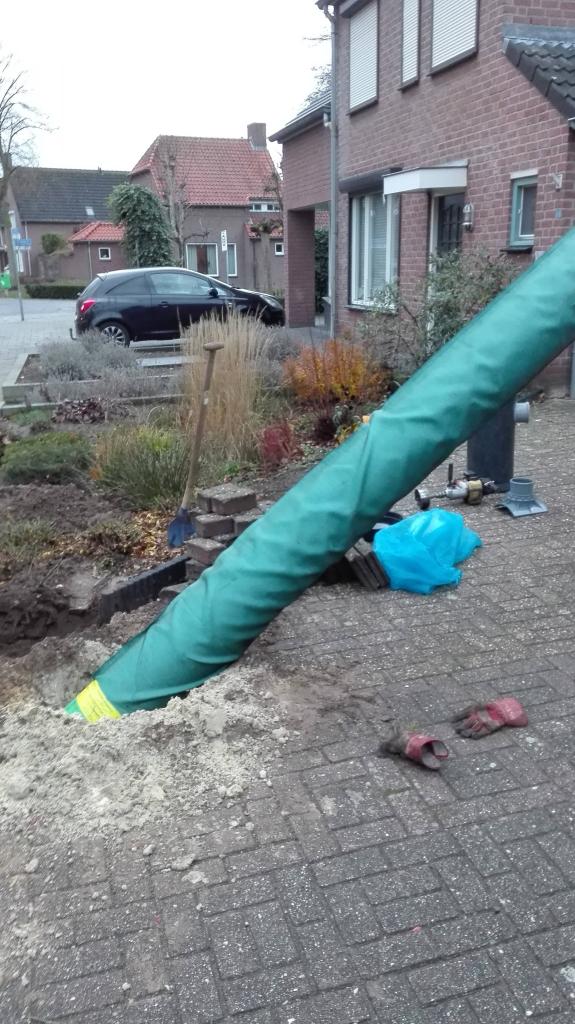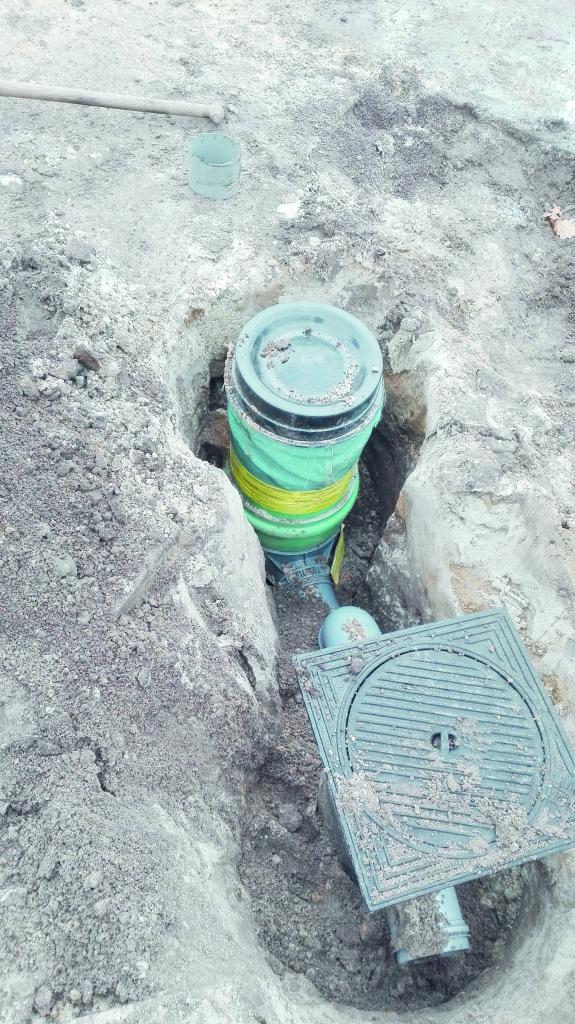Vertical infiltration
A vertical infiltration system is an ideal measure for collecting rainwater and allowing it to sink into the soil if:
- there is limited space in your garden;
- there is room for an excavator;
- the soil is highly permeable;
- the groundwater level is deep.
Vertical infiltration consists of a 5-meter-deep infiltration pipe with small holes. Around this is an infiltration cloth and infiltration or lava sand. Rainwater runs through a sand and dirt trap to this infiltration pipe after which it can sink into the soil.
Cost
The cost is low. Especially when compared to other underground systems.
Space use
The use of space is very small. You need about twice an area of 50 cm diameter.
Difficulty
Construction of a vertical infiltration system is easy. To drill a hole, however, you do need a machine and accompanying drill bit. This is best done by someone else. The other parts you can also build yourself.
Earthmoving
Construction of the vertical infiltration pipe does not require much earthwork. You do still need to dig in the sand and dirt trap and connect the stormwater pipes to your system.
Maintenance
Not much maintenance is required. Occasionally you will need to empty the sand and dirt trap.
Climate Goals
Natural groundwater recharge.
Biodiversity
Contribution to improving biodiversity
Points of interest
- If the top layer of the soil consists mainly of clay and loam, this measure is not useful. The water cannot then sink into the soil quickly.
- In old homes, the downspout is often also the vent to the dirty water sewer. If you disconnect this downspout then you must restore the venting.
- An infiltration pipe does not have much storage capacity. This need not be a problem with well-drained soil and a deep groundwater table.
- During extreme thunderstorms, the infiltration can nevertheless sometimes suddenly fill up. Health ensure that excess water can drain away to the garden or to the street, for example.
- Stay about 3 meters away from the foundation and trees.
- Depth infiltrations are not allowed in groundwater protection areas.

